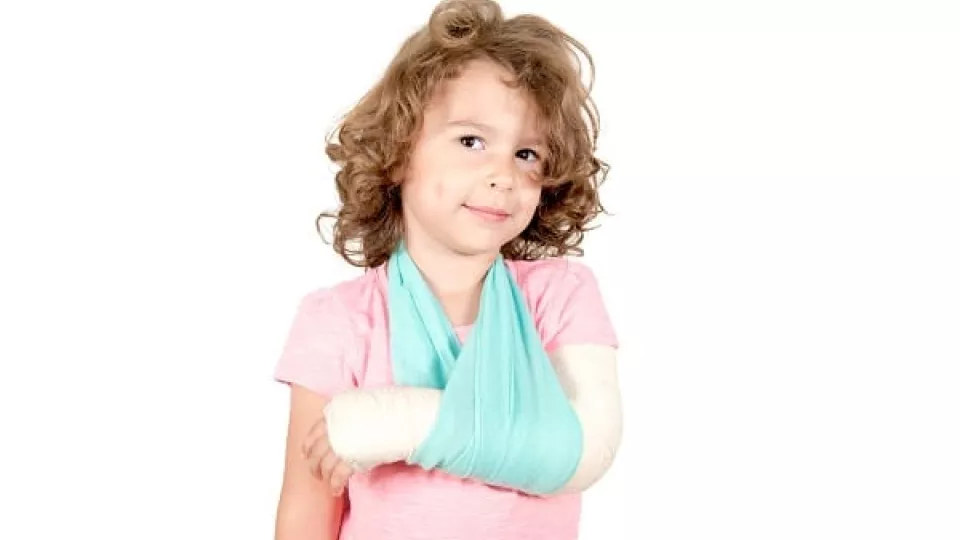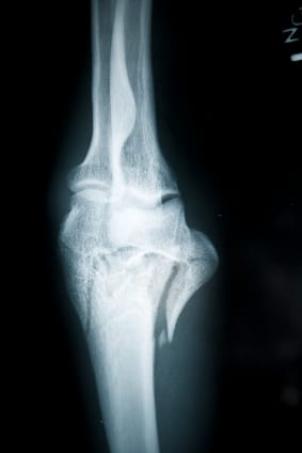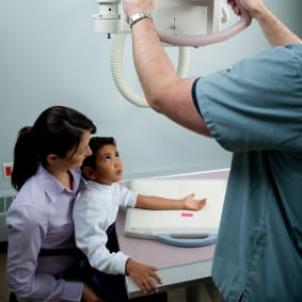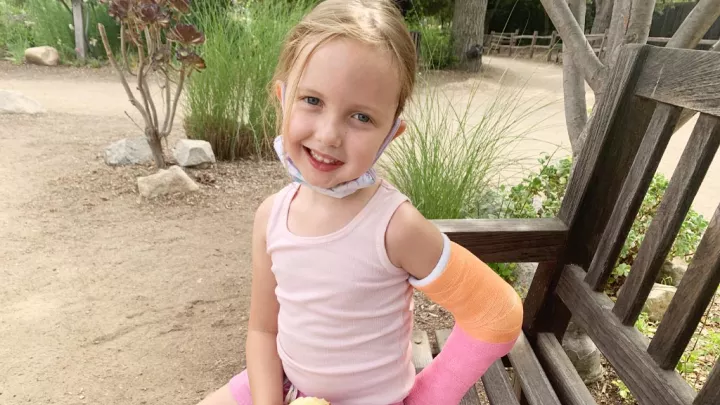
Breaking Down Broken Arms
There we were, four families gathered for one of our nightly dinner parties during our annual stay at a mountain cabin when we heard a THUMP and the tell-tale sound of injury, a child beginning to cry. Until that moment, the children had been running around the big mountain cabin as they played. Then, one of the boys had taken a tumble off of the porch steps. As the adults arrived on scene, a nine-year old was crying and holding his left arm. Knowing that I work at Children’s Hospital Los Angeles in the Department of Rehabilitative Medicine, all adults then looked to me for next steps.
"OK, orthopedic nurse," their eyes said, "is it broken?"
I went over to assess my new "patient." When I looked at the arm, I could not see anything very remarkable about it. There was no bone protruding (thank goodness!) and no bleeding. I couldn't see any deformity either. But, as I looked at this young man's face, I saw that it was pale and sweaty, and he was trying hard not to cry. I asked him to tell me his pain level on a scale of 1 to 10 (1 being no pain and 10 being the worst pain he had ever felt).
Quietly, he answered, "10."
His parents looked at me and asked, "It's not broken, is it? The nearest emergency room is two hours away down the mountain." I explained to his parents that I believed it might be broken, not because I could "see" the fracture, but because I could see the boy's physical response to the incident. Down the mountain the family went, and called us hours later. His arm was indeed fractured. Kids are resilient, dusting themselves off, one spill after another. But one wrong move can often result in a broken bone. A broken arm is almost a cliché symbol of "rough and tumble" boyhood. They seem to occur so frequently among rambunctious youngsters that some parents might think the injury is "not a big deal." However, a broken arm is definitely no laughing matter and requires immediate medical attention.

Facts about Broken Arms
- Ratio of Boys to Girls Fractured arms are 2 times more common in boys than girls.
- Age Fractured arms are most common in ages 5 to 9 as the joints are looser at this age.
- Open Fractures Open fractures (injuries in which a broken bone is open through the skin) are rare. Mostly they occur from a direct fall onto an outstretched hand.
- Fracture Symptoms Symptoms include pain, swelling and deformity at the elbow joint.
Diagnosis of Fractures
Fractures require an X-ray to determine the type of fracture. Despite comments from friends that, as an orthopedic nurse I should have "X-ray eyes," the only way you can ensure that a child does not have a fracture is by visiting a Radiology Lab to get this done. Emergency rooms and hospitals have access to radiology lab settings 24 hours a day. Based on the type of the fracture identified(described below), the doctor will determine the best course of treatment.

Better Safe Than Sorry
During the years I worked as an orthopedic nurse, I saw children whose parents refused to believe medical attention was needed. In some cases, these parents even visited a massage therapist for what they felt was a minor wound. However, these children usually still ended up at a hospital because their pain would not subside as the injured limb became swollen and more deformed-looking.
Risks of Delaying Fracture Treatment
The risk of not treating fractures is that important nerves and blood vessels that are near the elbow joint can be injured and without correcting the displaced bones these could be permanently damaged. Another risk is malunion, which takes place when the bones are not aligned correctly. This can result in the patient losing complete movement or experiencing deformity. A greater threat is compartment syndrome, which is the compression of blood vessels, nerves, and muscle inside a closed space or "compartment" within the body. It is very painful and can result in serious injury and in extreme cases, amputation or death.
Please Share
Let other parents know that if they suspect their child's bone has been broken to take them to the hospital. Waiting too long to treat a fracture could result in complications that can easily be avoided. At Children’s Hospital Los Angeles, our Emergency Department and the Jackie and Gene Autry Orthopedic Center is specifically equipped to treat broken bones in children and, although these often are quick fixes, they are vital for the health and future of the injured child!


